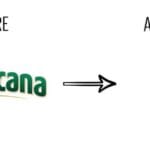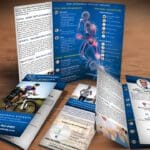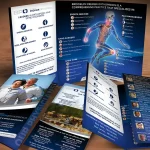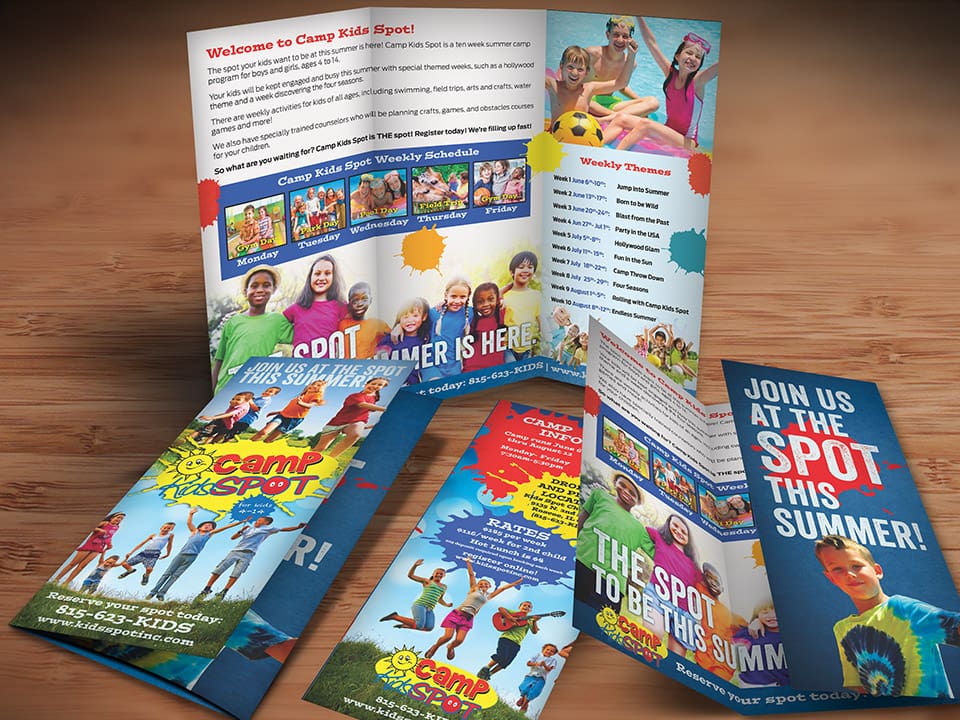Website layout design refers to the arrangement and organization of various elements on a website. It involves the placement of text, images, navigation menus, and other components to create an aesthetically pleasing and user-friendly interface. A well-designed website layout is crucial for creating a successful website as it directly impacts user experience, brand identity, and overall website traffic.
Key Takeaways
- A great website layout is crucial for a successful online presence.
- Knowing your target audience is key to creating an effective layout design.
- Best practices for website layout design include simplicity, consistency, and hierarchy.
- Consistency and cohesion are important for creating a professional and polished look.
- Color and typography play a significant role in website layout design and can impact user experience.
Understanding the Importance of a Great Website Layout
A great website layout has a significant impact on user experience. When users visit a website, they expect to find information quickly and easily. A well-designed layout ensures that the most important information is prominently displayed and easily accessible. It helps users navigate through the website effortlessly, find what they are looking for, and complete desired actions such as making a purchase or filling out a form.
In addition to enhancing user experience, website layout design plays a crucial role in conveying brand identity. The layout should reflect the brand’s personality, values, and aesthetics. Consistency in design elements such as colors, typography, and imagery helps establish brand recognition and builds trust with users. A cohesive and visually appealing layout creates a positive impression of the brand and encourages users to engage with the website.
Furthermore, website layout design has a direct impact on website traffic and conversion rates. A poorly designed layout can lead to high bounce rates, where users leave the website without exploring further. On the other hand, a well-designed layout can attract and retain visitors, increasing the chances of conversion. A visually appealing and user-friendly layout encourages users to stay longer on the website, explore different pages, and take desired actions.
Knowing Your Target Audience for Effective Layout Design
Understanding your target audience is crucial for effective website layout design. Different demographics have different preferences and expectations when it comes to website design. By identifying your target audience, you can tailor your layout design to meet their needs and preferences.
To identify your target audience, you can conduct market research, analyze website analytics, and gather feedback from existing customers. Market research helps you understand the demographics, interests, and behaviors of your target audience. Website analytics provide insights into user demographics, behavior flow, and engagement metrics. Gathering feedback from existing customers through surveys or interviews can provide valuable insights into their preferences and pain points.
Once you have identified your target audience, you can tailor your website layout design to meet their needs. For example, if your target audience is tech-savvy millennials, you may want to incorporate modern design elements and interactive features. If your target audience is older adults, you may want to prioritize readability and simplicity in your layout design.
Best Practices for Website Layout Design
There are several best practices to keep in mind when designing a website layout. First and foremost, simplicity is key. A cluttered and complex layout can overwhelm users and make it difficult for them to find what they are looking for. Keep the layout clean and uncluttered, with ample white space to allow the content to breathe.
Consistency is another important aspect of website layout design. Consistent use of colors, typography, and design elements throughout the website creates a cohesive and professional look. It helps users navigate the website easily and builds brand recognition.
White space, or negative space, is an essential element in website layout design. It refers to the empty space between elements on a webpage. White space helps improve readability, draw attention to important elements, and create a sense of balance and harmony in the layout. It also enhances the overall visual appeal of the website.
Tips for Creating a Consistent and Cohesive Layout
Consistency is crucial in website layout design as it helps users navigate the website easily and builds brand recognition. To create a consistent and cohesive layout, start by establishing a style guide that outlines the colors, typography, and design elements to be used throughout the website. This ensures that all pages have a unified look and feel.
Another tip for creating a consistent layout is to use templates or grids. Templates provide a framework for organizing content and ensure consistency across different pages. Grids help maintain alignment and balance in the layout, making it visually appealing and easy to navigate.
Visual hierarchy is also important in website layout design. It refers to the arrangement and prioritization of elements based on their importance. By using size, color, and placement, you can guide users’ attention to the most important elements on the page. This helps users quickly understand the hierarchy of information and find what they are looking for.
The Role of Color and Typography in Website Layout Design
Color and typography play a crucial role in website layout design as they contribute to the overall visual appeal and user experience. When choosing a color scheme for your website, consider your brand identity, target audience, and the emotions you want to evoke. Different colors have different psychological effects, so choose colors that align with your brand personality and resonate with your target audience.
Typography is another important aspect of website layout design. The right typography can enhance readability, convey brand personality, and create visual interest. When selecting typography for your website, consider factors such as legibility, scalability, and compatibility across different devices. Choose fonts that are easy to read and complement your brand identity.
Designing for Mobile and Responsive Websites
Designing for mobile devices is essential in today’s digital landscape as more users access websites through smartphones and tablets. A mobile-friendly website layout ensures that users have a seamless browsing experience regardless of the device they are using.
When designing a mobile-friendly website layout, consider factors such as responsive design, touch-friendly elements, and simplified navigation. Responsive design allows the layout to adapt to different screen sizes, ensuring that content is displayed properly on all devices. Touch-friendly elements such as larger buttons and clear call-to-action buttons make it easier for users to interact with the website on touchscreens. Simplified navigation, such as collapsible menus or hamburger menus, helps conserve screen space and improve usability on mobile devices.
Creating a User-Friendly Navigation System
A user-friendly navigation system is crucial for website layout design as it helps users find information quickly and easily. When designing a navigation system, prioritize simplicity and clarity. Use clear and descriptive labels for navigation menus and organize them logically. Avoid overwhelming users with too many options and keep the navigation menu concise.
Consider incorporating visual cues such as hover effects or active states to indicate the current page or section. This helps users understand their location within the website and improves navigation.
Using Images and Graphics to Enhance Your Layout
Images and graphics are powerful tools in website layout design as they can enhance the visual appeal, convey messages, and evoke emotions. When selecting images and graphics for your website, choose high-quality visuals that are relevant to your content and brand identity. Avoid using generic stock photos and opt for original or customized visuals whenever possible.
Use images and graphics strategically to enhance your website layout. For example, use images to break up text-heavy sections, highlight key messages, or showcase products. Graphics such as icons or illustrations can be used to improve readability, guide users’ attention, or add visual interest to the layout.
Testing and Refining Your Website Layout for Optimal Results
Testing and refining your website layout is crucial for achieving optimal results. Conduct usability testing to gather feedback from real users and identify any usability issues or pain points. This can be done through user testing sessions, surveys, or heat map analysis.
Based on the feedback received, make necessary adjustments to improve the layout design. This could involve rearranging elements, simplifying navigation, or optimizing the placement of call-to-action buttons. Continuously monitor website analytics to track user behavior, engagement metrics, and conversion rates. This data can provide insights into the effectiveness of your layout design and help identify areas for improvement.
In conclusion, website layout design plays a crucial role in creating a successful website. It impacts user experience, brand identity, and overall website traffic. By understanding the importance of a great website layout, knowing your target audience, following best practices, and testing and refining your layout design, you can create a visually appealing and user-friendly website that attracts and retains visitors. Remember to prioritize simplicity, consistency, and usability in your layout design to create a positive impression and encourage user engagement.
If you’re interested in website layout design, you may also find our article on raster to vector conversion helpful. This process is essential for creating high-quality graphics and images that can be easily scaled without losing any detail. Check out our article on raster to vector conversion to learn more about this important technique in graphic design.
FAQs
What is website layout design?
Website layout design refers to the process of arranging and organizing the visual elements of a website, including text, images, and other media, in a way that is aesthetically pleasing and easy to navigate.
Why is website layout design important?
Website layout design is important because it can greatly impact the user experience of a website. A well-designed layout can make it easier for users to find what they are looking for and navigate the site, while a poorly designed layout can lead to frustration and confusion.
What are some key elements of website layout design?
Some key elements of website layout design include the use of white space, typography, color, and visual hierarchy. These elements can help to create a clear and organized layout that is easy to navigate.
What are some common website layout design trends?
Some common website layout design trends include the use of responsive design, minimalist design, and flat design. These trends focus on creating clean and simple layouts that are easy to navigate on a variety of devices.
What are some best practices for website layout design?
Some best practices for website layout design include keeping the layout simple and easy to navigate, using consistent typography and color schemes, and ensuring that the layout is optimized for different devices and screen sizes. It is also important to consider the needs and preferences of the target audience when designing a website layout.















0 Comments